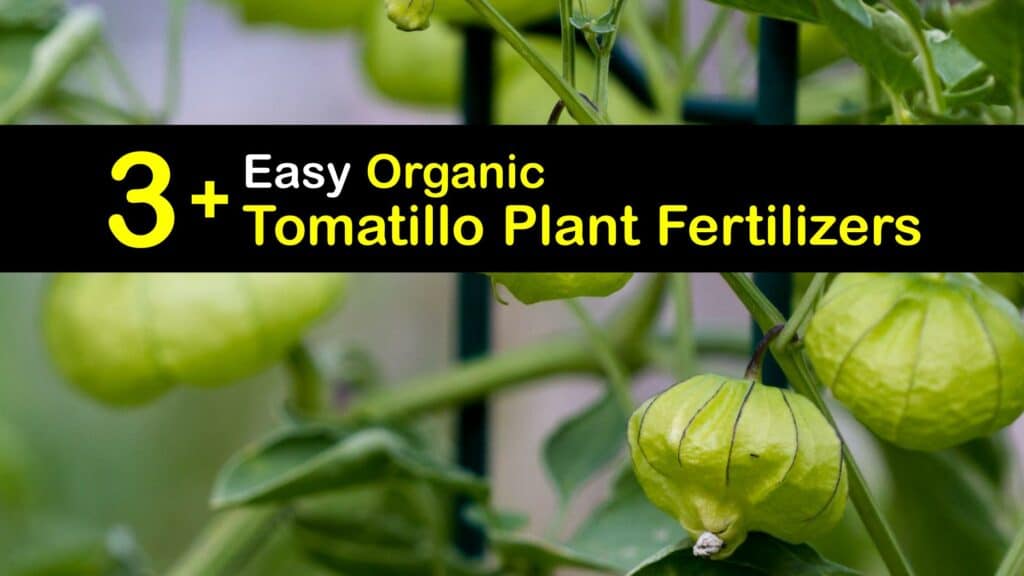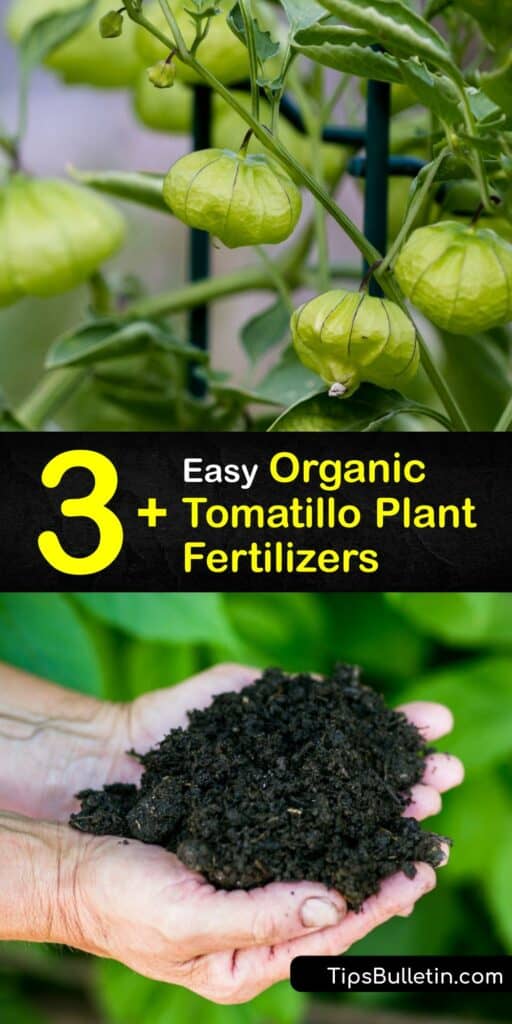The two varieties of tomatillos are Physalis ixocarpa and Physalis philadelphica. These members of the nightshade family are native to Mexico and Central America, and they have long been used in traditional Mexican dishes, including enchiladas and tomatillo salsa. Explore ideas about homemade fertilizer for tomatillos and keep your plants healthy.
With just a few tomatillo plants in your yard, you can prepare a lot of salsa verde, green salsa, and other delectable recipes. One tomatillo plant yields an abundance of fruit. Learning how to fertilize tomatillos further increases your harvest size and supports your plants in resisting diseases and pests.
Don’t use expensive synthetic fertilizer which introduces toxins into your food. Create your own organic tomatillo plant fertilizer with familiar items and nourish your tomatillos without relying on harmful substances. Using fertilizers such as compost and banana peels reduce food waste and save money. Find the best fertilizer for a ripe tomatillo harvest and ensure your plants thrive this growing season.

Create Organic Tomatillo Plant Fertilizer
The tomatillo is scientifically known as Physalis philadelphica or Physalis ixocarpa and is often referred to as the ground cherry, Mexican husk tomato, or green tomato. This ripe fruit stars in many salsas and has a more acidic flavor than a tomato.
These plants are relatively simple to grow, though knowing how to fertilize tomatillos is beneficial. Select a method from the list below to craft homemade fertilizer for tomatillos and grow large, tasty fruits in your home garden.

Finally, read on for the best methods for growing tomatillos in a garden planter to enjoy this unique fruit in smaller spaces.
Tips for How to Fertilize Tomatillos
Growing tomatillo plants is uncomplicated, whether you’re producing green or purple tomatillo fruit. Protect your crop from garden pests such as potato beetles. Use an appropriate fertilizer to ensure a large harvest of ripe tomatillo fruits at the end of the growing season.
Tomatillos need nitrogen, potassium, and phosphate, plus additional minerals like calcium. Choose an easy-to-prepare DIY fertilizer and feed your plants four to eight weeks after transplanting. Avoid over-fertilizing, as this promotes excessive leafy growth and reduces fruit production.
Fertilizing Tomatillos With Compost
Compost is a natural tomatillo fertilizer made from decomposed organic matter. Composting converts waste products, including grass clippings, kitchen scraps, and paper into a natural fertilizer called finished compost.
In addition, follow our methods for using eggshells to help plants grow fruit. The calcium in egg shells helps to fertilize the dirt with your kitchen scraps.
When planting tomatillos, use finished compost in the hole or side-dress it onto mature plants to give them nutrients and enhance the soil structure. Compost encourages more air space in the earth to keep roots healthy and reduce root rot and fungal issues.
Epsom Salt as Homemade Fertilizer for Tomatillos
Epsom salts are the best fertilizer for tomatillo plants, especially if they’re deficient in magnesium. Made from magnesium sulfate, Epsom salt is a vital tool for anyone wishing to grow tomatillo fruit or raise a tomato plant. Magnesium sulfate supports tomatillo seedlings when transplanted and keeps mature plants functioning.
Combine the salt and water, stir until dissolved, and use the solution to water your tomatillos. The roots absorb the magnesium sulfate and carry it into the plant for usage.
Make a DIY Fertilizer for Tomatillos With Banana Peels
Banana peels are excellent tomatillo plant food or tomato fertilizer, and recycling them reduces food waste. Depending on your preferences, compost banana peels or turn them into a liquid or powdered fertilizer.
Your peels must be dry enough to be pounded into a powder, so bake them at low heat or let them dry in the sun. Soak peels in water overnight and then strained to create a liquid fertilizer.
Apply powdered or liquid banana peel fertilizer to the ground where your tomatillo plants are growing to nourish them. Tomatillo plants benefit from the calcium, phosphate, magnesium, and high potassium levels in banana skins.
Whether you’re growing tomatillos to add a little lime juice and make salsa verde or as a cover crop for weed control, it’s essential to fertilize the soil.
Plant tomatillo seed following the planting guide, make your own organic fertilizer, and support your tomatillo plants with a tomato cage throughout the growing season. Use a homemade organic tomatillo plant fertilizer to ensure that when you harvest tomatillos, you have an abundance of ripe ground cherry fruits.

If you loved this insightful article on homemade fertilizer for tomatillos, please share this knowledge with your friends and family interested in how to fertilize tomatillos on Pinterest and Facebook.